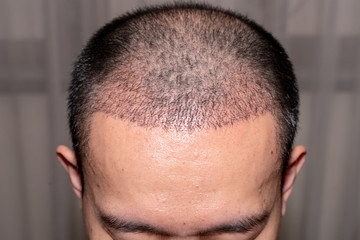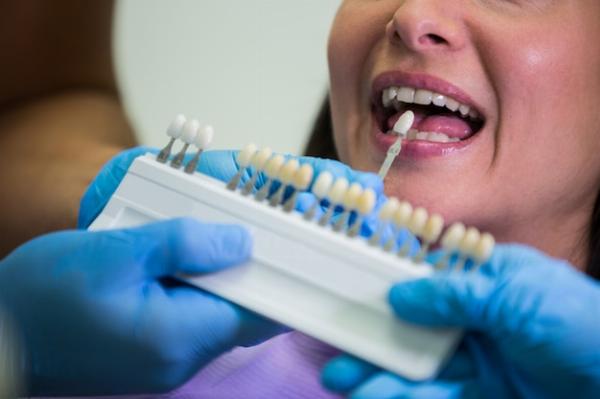Simple Steps to Effective Melasma Treatment Success

Strong 8k brings an ultra-HD IPTV experience to your living room and your pocket.
Introduction to Melasma
Melasma is a common skin condition characterized by the development of brown or gray-brown patches on the face, particularly on the forehead, cheeks, nose, upper lip, and chin. This condition often affects women more than men, with hormonal changes related to pregnancy or the use of birth control pills frequently acting as triggers. Although melasma is not harmful, many individuals seek Melasma Treatment in Dubai to improve its appearance.
Exploring Causes and Triggers
Understanding the causes and triggers of melasma is crucial in determining an effective treatment plan. The overproduction of melanin, the pigment responsible for skin color, is a primary factor leading to melasma. Various elements can exacerbate this condition, such as prolonged sun exposure, which stimulates melanin production, making the patches more pronounced. Hormonal changes during pregnancy, the use of hormonal contraception, and genetic predisposition also play significant roles in the development of melasma.
Topical Treatments for Melasma
Topical treatments are among the first lines of defense against melasma. These include over-the-counter and prescription creams that contain specific active ingredients designed to lighten hyperpigmentation. Hydroquinone is one of the most widely used agents, known for its skin-lightening properties. It works by inhibiting an enzyme involved in melanin production, thus helping to reduce the appearance of dark patches.
Other effective topical agents include glycolic acid, which exfoliates the skin and promotes new cell turnover, and niacinamide, recognized for its anti-inflammatory properties and ability to minimize pigmentation. Tretinoin, a retinoid derived from Vitamin A, is another powerful option that accelerates cell turnover and can enhance the effectiveness of other treatments when used in combination.
Advanced Treatment Options
For individuals seeking more aggressive solutions, several advanced treatments are available. Chemical peels involve the application of solutions that exfoliate the skin’s surface, effectively removing the upper layers where hyperpigmentation resides. These peels can lead to significant improvements in skin tone and texture.
Microneedling is another innovative treatment option that creates micro-injuries in the skin, stimulating the body's natural healing response. This process can result in the regeneration of healthier skin, reducing the appearance of melasma.
Laser therapies, such as fractional laser treatments or intense pulsed light (IPL), effectively target the excess pigmentation in the skin. These treatments utilize concentrated light pulses to break down melanin, promoting an even skin tone. Patients often notice improvements after several sessions, making this a popular choice among those with stubborn melasma.
The Importance of Sun Protection
A fundamental component of any melasma treatment plan is diligent sun protection. UV exposure can trigger melasma flare-ups and worsen existing pigmentation. It is crucial to incorporate a broad-spectrum sunscreen with an SPF of 30 or higher into your daily skincare routine. Tinted sunscreens can be particularly beneficial as they contain mineral-based ingredients that not only protect against UVA and UVB rays but also can help mask hyperpigmented areas.
In addition to using sunscreen, wearing protective clothing and seeking shade during peak sun hours can provide extra defense against UV damage. Regularly reapplying sunscreen, especially during outdoor activities, is essential for maintaining skin health and minimizing melasma symptoms.
Lifestyle and Home Remedies
In addition to professional treatments, certain lifestyle changes and home remedies can support the management of melasma. Maintaining a healthy diet rich in antioxidants can help improve overall skin health. Foods high in vitamins C and E, such as fruits, vegetables, and nuts, may particularly benefit the skin.
Hydration is also vital; drinking plenty of water ensures that the skin remains hydrated and retains its elasticity. This simple measure can make a noticeable difference in the skin's appearance and overall health.
Some patients explore natural remedies, such as aloe vera or licorice extract, known for their skin-brightening qualities. While these natural treatments may not provide immediate results, they can complement other therapies and contribute to long-term improvement.
The Psychological Impact of Melasma
The presence of melasma can significantly affect an individual's self-esteem and confidence. Many people experience feelings of frustration or embarrassment due to the visibility of dark patches. This psychological impact should be acknowledged as patients navigate their treatment options.
Support networks, whether through online forums or local groups, can be invaluable for individuals dealing with melasma. Sharing experiences and strategies can foster a sense of community and help individuals feel less isolated in their struggle.
Working with a Dermatologist
For those facing persistent melasma, working closely with a dermatologist is essential for creating a personalized treatment plan. A dermatologist can conduct a thorough assessment, considering factors like skin type, the extent of pigmentation, and individual lifestyle. They can guide patients in selecting the most effective combination of treatments, ensuring the best possible outcomes.
In addition, regular follow-up appointments can help monitor progress and make necessary adjustments to the treatment plan. Continuous communication about any concerns or side effects allows for a more tailored approach, addressing the uniqueness of each patient's skin.
Maintaining Results
Once effective treatment has led to improvements in melasma, maintaining those results requires ongoing commitment. Patients are encouraged to continue with sun protection measures, adhere to their established skincare routine, and monitor any changes in their skin. Flare-ups may still occur, but an established maintenance plan can help mitigate them.
In some cases, periodic touch-up treatments may be necessary to sustain results and address any new pigmentation. Being proactive about skin health through proper maintenance and monitoring can greatly enhance long-term success.
Conclusion
Discovering the best melasma treatment solutions involves a multifaceted approach that combines topical treatments, advanced procedures, and diligent sun protection. Emphasizing a collaborative relationship with dermatologists can significantly influence the effectiveness of treatment plans, allowing for personalized strategies that suit individual needs. With the right education, resources, and support, individuals affected by melasma can achieve clearer, even-toned skin and improve their overall confidence and well-being.
Note: IndiBlogHub features both user-submitted and editorial content. We do not verify third-party contributions. Read our Disclaimer and Privacy Policyfor details.







